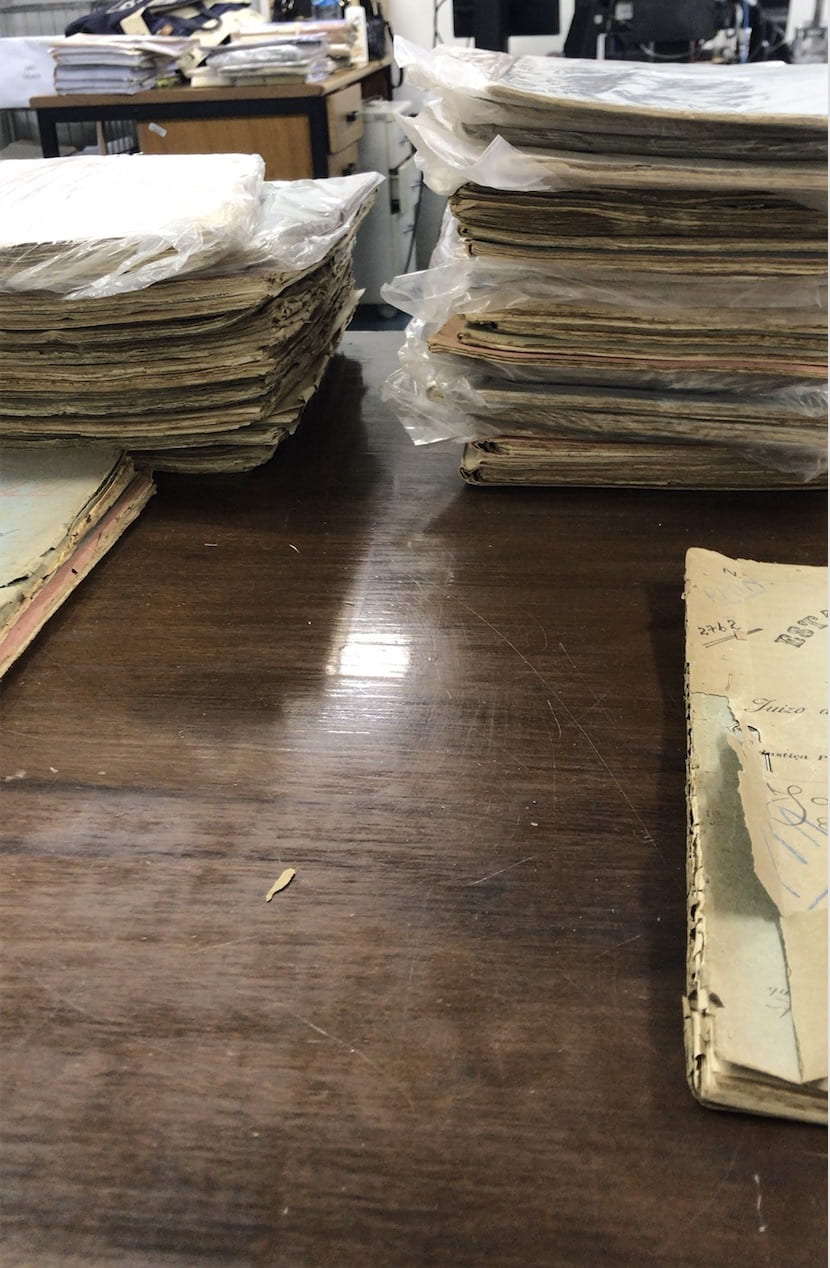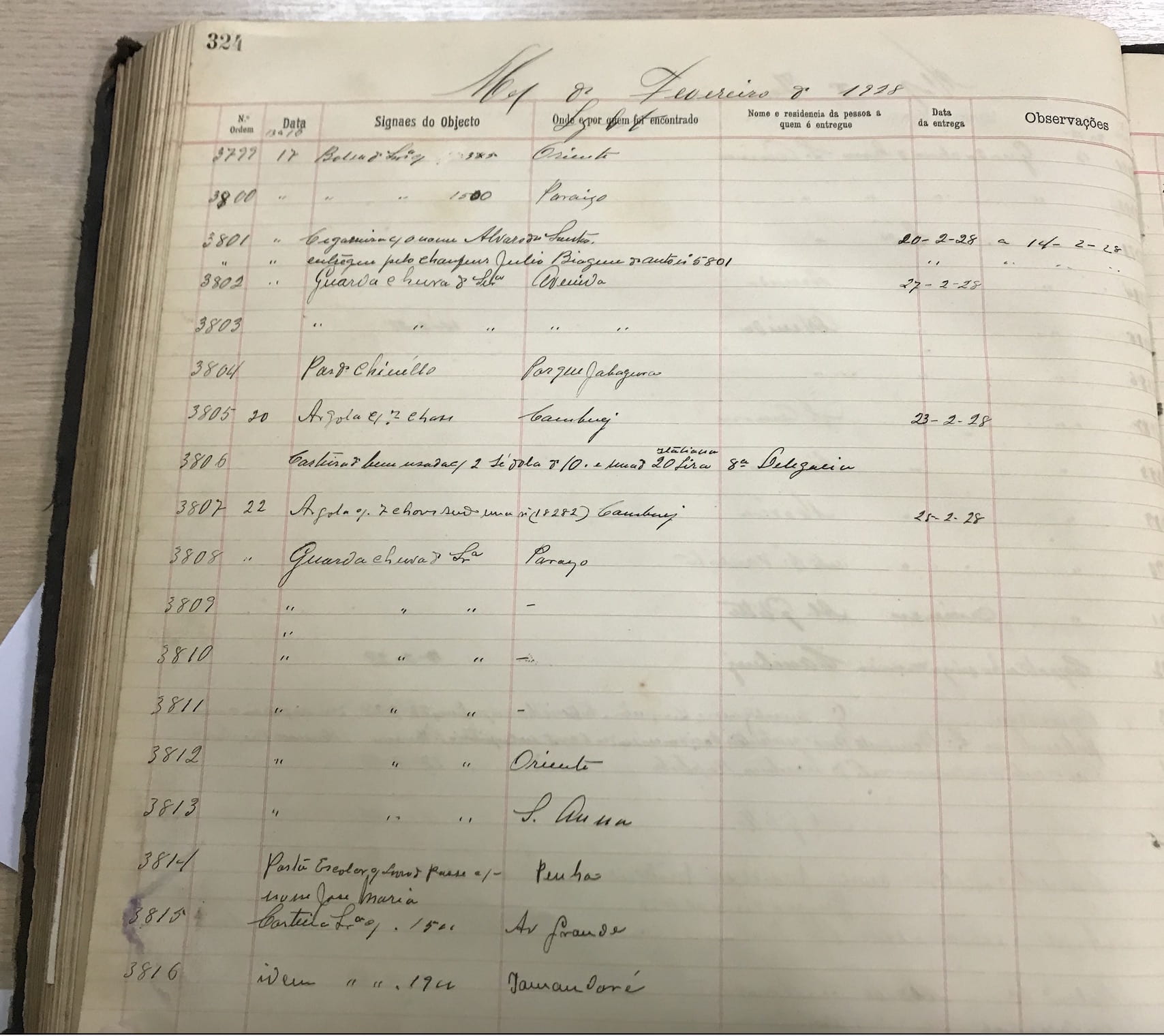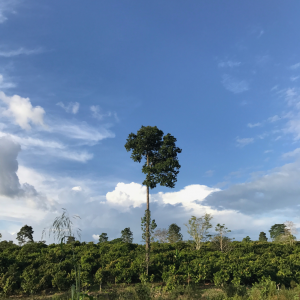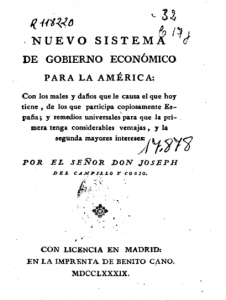Jun 10, 2020 |
Hanna Manente Nunes, PhD Candidate, History
I started archival research for my dissertation roughly two years ago in the Summer of 2018. At that point I had no such thing as a project, although I did have ideas, some better articulated than others, and I had questions, though none of them were particularly clear. With this, I spent three months at São Paulo’s Judicial Archive (ATJSP) photographing over 500 criminal cases (Figure 1). At the beginning of the following Spring quarter, I received a text message from one of ATJSP’s archivists. The state government, she wrote, was shutting down the archive’s operations in order to cut costs. Documents would be transferred to a private storage facility in a neighboring city, but it was unclear when and under which circumstances they would be made available again. If I still had work to do, she warned, I had to do it soon because in three weeks’ time the building would be closed. From Chicago, all I could do was delegate the data collecting to others. The coordinated effort of a good partner and four willing undergraduates led to almost 200 cases being sorted and photographed in those three fateful weeks. It was out of luck that I began my research when and where I did, befriending the right person at the right time. I was lucky to find five people willing to fully dedicate themselves to my research for almost a month. Luck, I have learned, is an intrinsic part of the process.

Figure 1: Unsorted criminal cases at the now deactivated São Paulo Judicial Archive, taken in the Summer of 2018
When Spring of 2019 came after what felt like a long-lasting winter, I had more pictures than I could possibly read stored in the cloud. I also, quite surprisingly, was convinced I had a plan and foundation for my dissertation. Somehow, I managed to successfully convince others of my plan, and so I became a candidate. Instead of haphazardly-put-together ideas, I had ideas. Instead of convoluted questions, I had questions. With these ideas and questions, I walked into the city of São Paulo’s Municipal Archive. Two weeks in, my plan began to falter. The documents refused to conform to my beautifully formulated inquiries. They kept stretching me toward the margins of pages, making me scribble thoughts as they came in. Days passed in a haze, partially due to the unforgiving arrival of the Brazilian summer in that tiny room with no A/C and a barely functioning fan, but also due to the daily exercise of letting go. Every document that went from a dusty box to the cloud moved me further away from the plan that had made me a candidate. I had invested months in pulling my best thoughts together into one cohesive narrative, but the documents did not seem to care. When I finally gathered up the courage to send a report to my committee, it read “(all) things have changed.” The haze, I have learned, is an intrinsic part of the process.
I had very few project-related certainties left when the world as a whole lost its footing in the Winter quarter of 2020. I knew, for instance, that my dissertation was going to be about consumption, popular commercial practices, and material exchanges that mediated São Paulo’s urban space in the early twentieth century. I knew, based on more than 200 gigabytes of photographed documents I stored in the cloud, that the picture I will eventually sketch is one of a city largely connected by criminal, illegal, and informal economic activities. I knew, as annotated on a lost and found book kept by São Paulo’s Central Precinct, that on February 22, 1928, thirteen people had forgotten their umbrellas in the city’s trams (Figure 2). But I did not know if it actually rained on February 22, 1928, and that was key. While the forgotten umbrellas seemed to indicate so, that was not definite proof. Looking for weather forecasts, I found a column at the Correio Paulistano newspaper which luckily stated on February 23rd that on the previous day the sky had been overcast and rainy (Figure 3). Digging a bit deeper, I found several news reports published by the Estado de São Paulo which made note of a severe thunderstorm that had befallen the city. Bingo!

Figure 2: A 1928 page of the “lost and found” logbook kept by São Paulo’s First Precinct, held in São Paulo’s Public Archive

Figure 3: The meteorological report published on February 23, 1928, in the Correio Paulistano
I have come to accept uncertainty, luck, and being dazed and confused as intrinsic parts of the research process. All that I cannot control plays as formative role in my work as all that I can control. The line, however, needs to be drawn somewhere. For now, I have drawn mine at having the first sentence of my dissertation’s opening chapter being factually right. The sentence might very well change in two weeks’ time. It quite likely will, but until then, no other words will ever sound so accomplished. To say that it rained on February 22, 1928, would be an understatement. On that day, in the dazzling city of São Paulo, it poured.
Apr 30, 2018 |
Kerry LePain, LACS MA’17

Figure 1: The Transamazon Highway at the crossroads of rainforest, ranching, agriculture, and regrowth
Where does our food come from? I immediately think of two ways to answer this question – one in the sense of where the food was grown, and another farther off response concerning where a specific foodstuff or plant originated. It was this second question that brought me bumping down an ocher, dusty road on a motorcycle, arms wrapped around the waist of Seu Pedro, a proud grandfather and pioneering farmer to the Transamazon Highway region in the Brazilian State of Pará, as he took me on a show-and-tell trip through his cacao forests, locally known in Medicilândia for their distinctive cabruca agroforestry configuration.

Figure 2: A rich red earth side road leads toward Seu Pedro’s agroforestry plots and a towering skyline of rainforest trees.
While much of the margins along the Transamazon Highway are lined with sweeping expanses of electric green pasture, palms, and equally garish red earth, our trip along a northern side road led through increasingly towering and lush vegetation. Bright yellow piles of recently harvested cacao pods lay in piles, dappled by green light filtering down through the boughs of the surrounding cacao trees. Following Seu Pedro as we now walked through the forest, he gestured toward the crunching leaves underfoot—natural fertilizer from cacao and larger trees that served as a breeding ground for cacao’s main pollinators—and to massive fallen bromeliads that recently tumbled from the crown of a Brazil Nut Tree about one hundred feet above.

Figure 3: A scene from the cabruca agroforestry patch, as collected cacao is piled atop leaves beneath the rainforest trees.
Pedro’s cacao agroforestry belongs to a larger regional history intricately interwoven with the environment and is part of a growing drive to work with(in) the Amazon’s native vegetation and ecosystems. Brazil’s 2012 Forest Code requires that agricultural properties maintain an area of native vegetation as “Legal Reserve” corresponding to quotas established on a regional basis. At least on paper, landholdings within the “Legal Amazon” should reserve 80% of their total area as a forest preserve. As an answer to the question of environmental origin, cacao occupies a privileged place within Amazonian agriculture under the Forest Code. Cacao is native to the Amazon, and cacao trees count as reforestation and count toward the native vegetation “Legal Reserve” quota. Medicilândia, a municipality at Kilometer 90 of the Transamazon Highway largely blessed with rich soil, has leaned heavily into cacao agriculture, earning the reputation of Brazil’s “Cacao Capital,” while other neighboring communities have followed suit in attempts at prosperity and a rewrite of the Transamazon’s failed agriculture narrative.
Brazil’s military regime began construction of the Transamazon Highway in the early 1970s as part of a large-scale agro-colonization scheme designed to alleviate land crunches and leftist worries elsewhere in the nation, occupy the vast “empty” Amazon interior, and create a new Brazilian breadbasket. Much attention was focused on the modernization of the Amazon—long perceived as decadent, folkloric, and lackadaisical—but little planning attention went toward understanding the micro-regional specificities of a greater region that covers roughly 30% of South America’s total area. Erroneously viewed as one big forest, the Amazon is a conjunction of highly diverse—and diverging—forests, rivers, climates, and soil types, constituting a variety of ecosystems and agricultural potentials. When limited preliminary soil analyses along the Transamazon Highway around Medicilândia indicated rich soil, these results were extrapolated as representative of the entire region, and used as justification for agricultural projects without properly taking into account climactic variation, potential pests and diseases, and the possibility of soil inconsistency. The military regime and its colonization agency, INCRA, recruited large numbers of colonists from the South and Northeast and incentivized waves of commodities because they grew well elsewhere in Brazil. Medicilândia’s farmers tried their hands with rice, beans, black pepper, tomatoes, guaraná, coffee, and sugarcane, but their efforts were frustrated by heavy rains, hungry animals, diseases, and patchy soil conditions. The dirt roads frequently washed out following heavy Amazonian rains, and construction on the gargantuan network of planned roads could not keep pace with demand and stalled out after 1974 when the government prematurely classified the entire colonization project as a failure and largely left agricultural colonists in the Amazon, Brazil’s Wild West of sorts, to their own devices.
Distinctly wild cacao trees grow throughout the forests surrounding Medicilândia, but it was in the late 1970s that several colonists from the State of Bahia, historically associated with cacao agriculture, planted Medicilândia’s first commercial cacao groves. Elisangela Trzeciak—a regional government representative, member of a nascent cacao cooperative, and a daughter raised between ranching and cacao agriculture—claimed that cacao used to fetch a price equal to a kilogram of meat, an important benchmark as the trees fell and the Transamazon region increasingly gave way to cattle ranching. As with other previous commodities, Medicilândia’s cacao farmers have confronted obstacles to their success with cacao: at home in the Amazon, cacao is subject to indigenous pests, and prices have at times plummeted so low that some farmers took to cutting their cacao groves and abandoning their investments. By and large, however, Medicilândia’s cacao has been highly productive in comparison to other Brazilian regions and has allowed farmers with smaller plots of land to earn livable incomes that would be impossible with cattle. With groves of cacao trees, farmers are able to maintain gardens alongside and, in some cases, among the trees, supplementing their income and providing additional food for the families. Because cacao naturally grows as an understory tree, beneath the Amazon’s vaulted canopy, cacao naturally lends itself to agroforestry initiatives like Seu Pedro’s cabruca plots, where cacao trees are mixed among native vegetation, remaining hardwoods from before the plot was cleared, and new palms, hardwoods, and vines that have returned, making Seu Pedro’s plot a commercially productive interpretation of the regional forest ecosystem.

Figure 4: A young Brazil Nut Tree already towers above a farmer’s cacao patches.
It is in large part because of this “re-agro-forestation” potential that cacao has increasingly garnered attention within the Amazon, however the environmental services provided by properly managed cacao agroforestry plots and the farmers who work them underscore problems in the ways we purchase and know our food. Fair trade and organic agriculture receive attention as ethical choices available to consumers and as more equitable, environmentally sound means for growers to sell their products. Ivan Dantas came to the Medicilândia region as a young boy with his family with the onset of colonization and has been awarded prizes at Paris’ International Chocolate Fair (Salon du Chocolat) for the quality of his cacao beans. He is a staunch advocate for environmental stewardship of the forest, which he calls his “paradise,” but he also laments the local infeasibility and high cost of organic agriculture. Although the majority of cacao grown in the region is de facto organic, organic certification requires farmers to follow strict sets of regulations, to use specially designated fertilizers, and to front the cost of pricey inspections and certifications. Ivan explained that farmers within the Medicilândia region had inconsistent access to the organic fertilizers necessary for productive cacao, and due to falling yields and exhausted soil, he explained that he was leaving the town’s organic cooperative.

Figure 5: Seu Ivan’s prize winning fermented cacao beans are spread out to dry.
Throughout my time with Medicilândia’s cacao growers, their stories called into question the sufficiency of existing certifications, and the necessity of more comprehensive ways of differentiating products, educating and informing consumers, and justly compensating higher quality cacao and the environmental services that accompany it. Seu Pedro’s cabruca agroforestry cacao, for example, comprises a far greater effort and renders a much larger service than either organic or shade-grown agriculture. His trees are shaded in rehabilitated forest, designed to replicate as best possible the Amazon’s native vegetation while still permitting cacao agriculture. Because an accurate certification and label does not exist, Pedro’s cacao is sold alongside conventional, full sun cacao beans grown on deforested land and he receives no larger monetary return, despite the substantial investment required to restore the forest. While Pedro’s cacao and pocketbook can benefit from increased productivity, pollination, and soil fertility as a result of the restored forest, farmers such as Pedro could stand to benefit a great deal more if their environmental services were labeled, marketed, recognized, and sold.

Figure 6: Seu Pedro beside a large rainforest hardwood planted in his cabruca agroforestry patch
Stepping away from my research in the Amazon, I see the problem come full circle, returning to the question of our food’s origins. While consumers may appreciate picturesque nature photos adorning an organic bar of chocolate or a packet of coffee, they are able to abstract themselves from the realities of labor and production wrapped up in the package. The fundamental problem with these certifications, their fairness, and their value to farmers is that they come with a choice. Save money today, or reward a distant farmer with higher wages? Save money today, or compensate a farmer somewhere for an environmental service? In this sense, justice becomes the prerogative of the consumer, and not the right of the farmers. The burden of the origin of food, how it is made, and caring for the environment that supports it falls to farmers, whereas consumers have the right to choose to not understand their food.
Feb 28, 2018 |
Fidel J. Tavárez, Provost’s Postdoctoral Scholar, History
The eighteenth century was an age of imperial reform throughout the Atlantic world but especially in the Spanish Empire. Indeed, during this period, Spanish ministers made a concerted effort to transform Spain’s far-flung composite monarchy into a modern commercial empire capable of competing with Britain and France. Where did this interest in creating a Spanish commercial empire come from? What were its intellectual origins? These are some of the central questions that my research addresses and that I would like to explore very briefly in the paragraphs that follow.
I will begin by defining what I mean by “modern commercial empire.” The term does not simply refer to an empire that engaged in trade. What empire hasn’t? Rather, a modern commercial empire was a kind of polity that first took shape at the turn of the eighteenth century, when Enlightenment statesmen began to distinguish “empires of conquest,” which were almost exclusively focused on hoarding silver, from modern “empires of commerce,” which focused on promoting economic improvement through labor and trade. While British and French thinkers initially developed this modern ideology of empire, it was Spain that carried out the largest experiment of the eighteenth century with modern commercial imperialism.
In spite of its far-reaching nature, this new vision of empire had inauspicious beginnings in Spanish administrative circles. Its origins are to be found in the 1740s, when a manuscript titled Nuevo sistema de gobierno económico para la América circulated in the court among Spain’s most important statesmen. Indeed, the Nuevo sistema contained a basic blueprint of reform, which ministers of the second half of the century followed almost to the letter. It is surprising, to say the least, that few historians have attempted to reconstruct the intellectual context in which this relatively unpretentious but essential manuscript was written.

To understand the intellectual context that gave birth to the Nuevo sistema, it is necessary to provide a brief inventory of the most important versions of the text. While the first printed version of the Nuevo sistema dates to 1789, the most important manuscript versions allegedly date to 1743. There are at least two known versions of this 1743 manuscript, one at the Biblioteca Nacional de España and another at the Biblioteca del Palacio Real in Madrid. Additionally, portions of the Nuevo sistema appeared in the second half of Bernardo Ward’s Proyecto económico. There is a manuscript version of Ward’s Proyecto at the Biblioteca del Palacio Real, and a printed version appeared in 1779.
Scholars have assumed that the author of the Nuevo sistema was José del Campillo y Cossío, who is listed as the author in the manuscript versions of 1743. Given Campillo’s reputation as a respectable, hardworking, and learned minister, the attribution is not entirely unwarranted. However, upon close inspection, Campillo’s authorship becomes increasingly implausible. In particular, a passage within the Nuevo sistema alludes to a report written by Antonio de Ulloa, which likely refers to the celebrated Noticias secretas. This report was written in 1747 or 1748, which means that the Nuevo sistema could not have been written in 1743 and consequently that Campillo could not have written the text, especially considering that he had died in 1743.
The author of the Nuevo sistema probably was Melchor Rafael de Macanaz, a prolific writer and adviser to Philip V, the king of Spain until 1746. Among other reasons, Macanaz’s authorship can be proven by the existence of two manuscripts signed by the aforementioned adviser: 1) Discurso sobre la America española, held at the Real Academia de la Historia in Madrid, and 2) Nuevo sixtema para el perfecto gobierno de la América, which currently sits in the Instituto Valencia de Don Juan in Madrid. Both texts coincide almost to the letter with the manuscripts signed by Campillo. It is likely that Macanaz wrote the text earlier in century and continued to update it until the late 1740s. At that point, someone else, whose identity we may never recover, circulated the text as if Campillo were its author.
The fact that Macanaz was the original author of the Nuevo sistema provides a rich context from which to reconstruct the main ideas of the text. Although Macanaz was a faithful adviser to Philip V, he lived in exile in France from 1715 until 1748. In France, he experienced firsthand what contemporaries called the “John Law system,” an innovative scheme of administrative reform for the French Monarchy designed by the Scottish projector John Law. Law’s system included a national bank, a credit-based circulating currency, and a commercial company. Although Macanaz did not agree with everything the Scottish projector proposed, the fact that he used the concept of a “new system” clearly shows that the experience in France inspired him to design a project for a Spanish commercial empire. The notion of a “new system” allowed him to rethink the very foundations of the Spanish Monarchy, while portraying the king as a political engineer and his ministers as scientific advisers.
The key idea proposed in the Nuevo sistema was that Spain had to abandon the “spirit of conquest,” associated with the pursuit of mines and territories in Spanish America, and adopt the “spirit of trade and industry,” which was concerned with stimulating economic improvement by creating synergy between the colonies and the metropole. The reason behind this proposal was simple. “Real wealth,” the Nuevo sistema suggested, “consists in the products of the land and the industry of men,” not in hoarding bullion.[1] And the most efficient way to stimulate work was to promote commerce, “for it [commerce] revitalizes agriculture, the arts, factories and the manufactures of industry.”[2] Macanaz had a specific kind of trade in mind: comercio libre (free trade within the bounds of the empire). In fact, he continued, it was important “to think of liberty as the soul of commerce, without which it [commerce] could not prosper nor live.”[3] Commercial liberty, he concluded, “is the soul of all the improvements which we argued will occur in Spain’s agriculture, manufactures and other significant matters.”[4]
Macanaz’s new system had many more dimensions, among which we can cite the institution of a new administrative apparatus for the New World. However, for our purposes here, we should keep in mind a few of the tenets of commercial empire that Macanaz put forward in the 1740s: 1) that to become powerful Spain had to acquire markets, not bullion, 2) that Spain had an abundant source of markets in the colonies, and 3) that the best way to control colonial markets was to implement comercio libre between the metropole and the colonies. According to Macanaz, what would come about as a result of instituting comercio libre was a highly integrated imperial economic system in which the colonies and the metropole worked in concert to stimulate economic growth. This new vision of empire is what subsequent ministers had in mind when they issued and implemented decrees or charters of comercio libre in 1765, 1778, and 1789. As an exiled intellectual who lived in France during the first half of the eighteenth century, little could Macanaz have suspected that his advice paper, the Nuevo sistema, would transform the political culture, the administrative system, and the economy of Spain’s vast empire for the rest of the century.
[1] José del Campillo y Cossío, Nuevo sistema de gobierno económico para la América (Mérida, Venezuela: Universidad de los Andes, Facultad de Humanidades y Educación, 1971 [1789]), p. 209.
[2] Ibid., p. 95.
[3] Ibid., p. 94.
[4] Ibid., p. 146.










